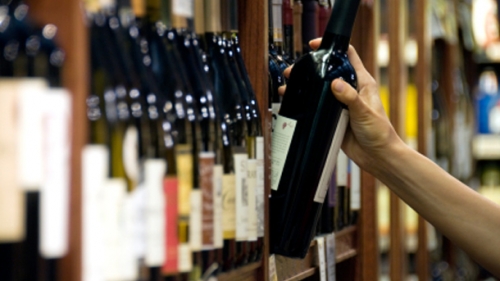What is a meal without a great glass of wine? Growing up, my parents would never serve us milk with our dinner; instead we were always allowed a little glass of wine. Nowadays, I couldn't imagine my meals without it, preferably red, to compliment my meal. But there is so much more to know about wine than red, white, and rosé. So I caught up with the extremely knowledgeable John Williams, the Manager of 'The D.C. Pasta Company', (a Dante Boccuzzi restaurant in Strongsville), to shed some light on the extensive world of vino.
GM: When choosing a wine at a restaurant or at the store, what are some key things to look for to ensure a quality bottle of wine?
JW: Vintage, varietal, appellation, and producer. I always tell guests to drink what they like. If French wines are your choice, drink French. If Cabernets are your pleasure, buy a Cabernet. Chances are if one goes with a well known producer with a great track record for tasty wines, the wine will be of quality. Choosing the proper vintage for wines can sometimes be a daunting task. I usually stick with old world wines (Italy, France, etc.) due to their bottling laws. Year to year will not change much due to the wine making laws in old world wines. I wouldn't tell a guest to have red wine with meats if they do not like red wine. Rather, I would steer them towards a full bodied white with their meal. Two dishes come to mind as exceptions; foie gras paired with Sauternes, and Pinot Noir with salmon.
GM: What are some wine basics?
JW: First is how to properly read a wine label. Old world wines tend to be a little more difficult to decipher, but it is very important to find out the vintage, varietal, appellation, and producer of the wine.
Second is how to store the wine. Temperature is the single most important factor in properly maturing wine. It is important when cellaring wines to hold them at a constant 55 degrees. Wine is made from food and is perishable. If held at higher temperatures the risk of the wine going bad is exponentially greater. The proper humidity is also quite important in the long term storage of wine. If not held at 70% humidity, the cork may dry out, lose shape, and therefore with not seal the wine properly causing oxidization of the wine. Light, or the lack of, is rather important in the storage of wine. Keeping the wine away from light will ensure the wine's clarity. The final key factor, (although there are more) would be the angle that the wine is stored. Horizontal to 45 degrees will keep the juice in constant contact with the cork and prevent air from getting in.
Third is how to properly serve the wine. The wine key can be one's worst enemy. It is a difficult, awkward tool to use and can ultimately embarrass the most seasoned of servers. My only advice: practice.
GM: What makes the wine list at DC Pasta Company unique?
JW: The wine offerings here at DC PASTA are vast. The menu is contrived of wines from all over the world, new world and old, with a heavy focus on Italian producers. The majority of the wines are small production from boutique producers. Some of which, less than 300 cases are produced each year. A great deal of the wines on the list can only be found here at DC PASTA. We offer 30 bottles under $30 which are also poured by the glass, and have over 65 total bottles to choose from. I have made sure to take a more modest markup on all the wines to provide the best experience for my guests.
GM: How did you select the wines for the wine list?
JW: The luxury I had when putting this list together was my training and experience. Guests of mine recently found out that I have trained under a master sommelier, and wrote all the wine lists in all the restaurants I have opened. They asked me how many bottles of wine I have tasted. I went to all my wine notes and lost count after 4,500 different wines. I wanted all the wines on this list to over deliver. The philosophy I followed was making sure that the wines tasted much more expensive than what the guest actually paid. For example, a $25 bottle of wine should drink like a $50 bottle and an $8 glass pour should blow away a similarly priced wine at surrounding restaurants. The specifics of the list were based on the flavor profile of Chef Dante's food. Each wine is food friendly. The list holds multiple offerings to be paired with any dish that Chef Dante has created without breaking the bank. At DC Pasta, we offer glass pours that range from $6 to $10, and bottles from $18 to $125. Guests have the ability to spend as little or as much as they want. No matter the price, each offering of wine will certainly not disappoint.



